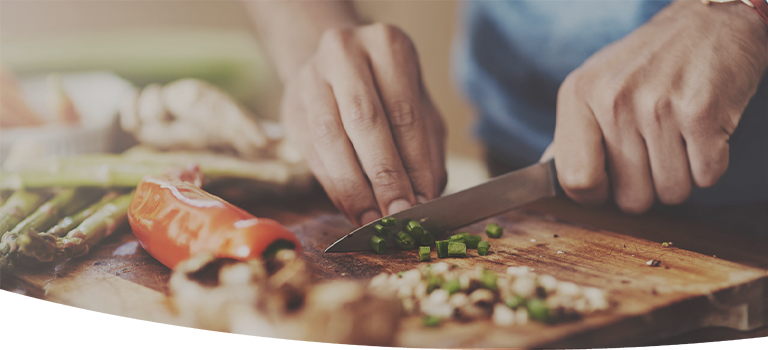Can you try Veganuary if you’re gluten free?
This month, over 500,000 people across the world have signed up to Veganuary – pledging to switch to a vegan diet for one month.
You might think that being on a gluten free diet means you can’t try Veganuary – but it doesn’t have to be difficult! We’ve collated our top tips and recipe ideas to help you make the change.
Remember, you don’t have to be taking part in Veganuary to use our vegan recipes – why not try making one as a starter or side dish, or swapping ingredients to match your taste? Give it a go – there’s never been a better time to experiment in the kitchen.
Before you start
Whatever your reasons for going vegan, it’s important to make sure you’re meeting all of your nutritional requirements and following a balanced diet. People with coeliac disease are recommended to have higher calcium recommendations compared to the general adult population. Iron, vitamin B12 and folate deficiency can be seen in people with undiagnosed coeliac disease, but once you have been following a gluten free diet for some time this should improve as the gut heals.
Where to get your…
Protein
You can get enough protein through the vegan diet alone, by including:
- Pulses (such as peas, beans and lentils)
- Nuts and seeds
- Processed meat alternatives made from textured soya protein* or mycoprotein*
- Plain tofu* (marinated products may contain gluten, so don’t forget to check the label)
TIP. Make yourself a protein and iron packed snack by creating your own trail mix. Try combining a few handfuls of almonds, cashews or macadamia nuts with some pumpkin seeds and your favourite dried fruits like apricots, prunes or raisins. Don’t forget to choose varieties with no added sugar.
Calcium
If you have coeliac disease, it’s essential to get enough calcium to maintain good bone health and prevent osteoporosis. Try:
- Fortified milk alternatives like soy, rice and almond milk*
- Tofu*
- Dark green vegetables like kale and broccoli
- Seeds
- Kidney beans, baked beans* (check the label if in sauce)
- Dried fruit, like apricots and figs
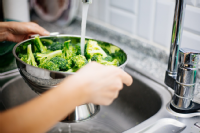 TIP. Tofu is a vegan nutritional powerhouse. It’s high in protein, contains all nine essential amino acids, and is a great source of iron and calcium too.
TIP. Tofu is a vegan nutritional powerhouse. It’s high in protein, contains all nine essential amino acids, and is a great source of iron and calcium too.
Vitamin D
This vitamin helps your body to absorb calcium, so look out for fortified products such as:
- Breakfast cereals*
- Milk alternatives*
- Orange juice
TIP: Learn more about calcium and vitamin D recommendations for people with coeliac disease here.
Iron
Low iron can lead to iron deficiency anaemia, leaving you fatigued, dizzy and weak. Good sources of iron include:
- Pulses
- Dark green vegetables
- Dried fruit
- Nuts and seeds
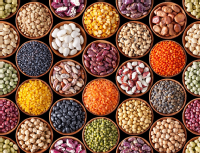 TIP: Boost iron absorption by having something high in vitamin C at mealtimes – like a glass of orange juice or a side of potatoes.
TIP: Boost iron absorption by having something high in vitamin C at mealtimes – like a glass of orange juice or a side of potatoes.
Vitamin B12
It can be hard to find vegan products naturally rich in B12, so try including:
- Fermented soya products*
- Certain types of seaweeds
- Fortified products like margarines and yeast extracts*
Iodine
Iodine is found in some plants but this is affected by the iodine content of the soil they’re grown in. Foods grown close to the ocean tend to be higher in iodine. Try adding seaweed and iodised salt sparingly to your meals.
Zinc
Phytic acid, (found in wholegrains and beans) can reduce the amount of zinc absorbed by the body, so don’t forget to include foods high in zinc, such as:
- Fermented soya*
- Fortified breakfast cereals*
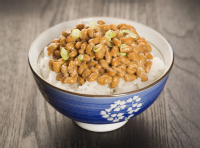 TIP: Soak dried beans and rinse before cooking to increase zinc absorption.
TIP: Soak dried beans and rinse before cooking to increase zinc absorption.
You can talk to your dietitian or GP for further advice on meeting your nutritional requirements, or give our Helpline a call on 0333 332 2033.
*These aren’t always gluten free so always check the label, or see our Food and Drink Information for suitable products.
Cooking up a storm
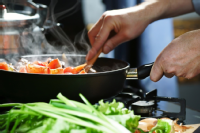 Many dishes are naturally vegan and gluten free. Fruit, vegetables, rice, gluten free pasta, beans, pulses, grains and nuts can all be used to make hundreds of different vegan and gluten free recipes, without breaking the bank.
Many dishes are naturally vegan and gluten free. Fruit, vegetables, rice, gluten free pasta, beans, pulses, grains and nuts can all be used to make hundreds of different vegan and gluten free recipes, without breaking the bank.
Head to the kitchen and start experimenting with our collection of vegan, gluten free recipes below:
Gluten free, vegan breakfast
Gluten free, vegan starters or snacks
Indonesian peanut and tomato soup
Caramelised Onion Hummus with Roasted Rainbow Carrots
Gluten free, vegan mains:
Falafel burger with tomato salsa
Nasi Goreng (Indonesian stir fried rice)
Imam Bayildi (Turkish aubergine dish)
Broccoli and broad bean tagine
Courgette and broad bean bolognese
Gluten free, vegan desserts:
Pear and cranberry almond crumble
TIP: A little preparation can go a long way, and will make it much easier to stick to your new diet. Prep breakfast and lunch the night before, or cook in bulk and freeze your meals to save time (and money!).
Looking for more inspiration to help you live well, gluten free? Head over to our Home of Gluten Free Recipes, where you’ll find thousands more vegan, veggie and meat recipes to try in 2021.
